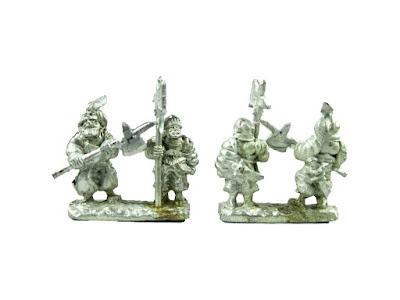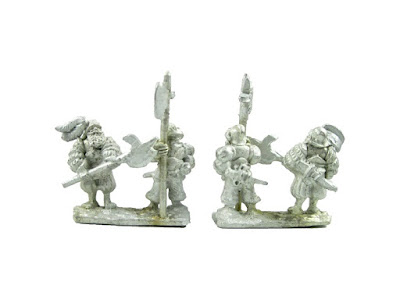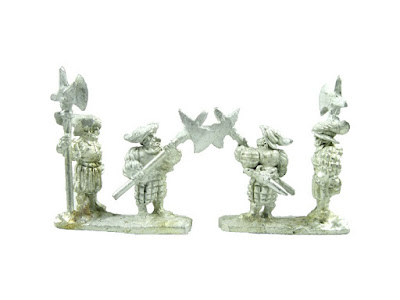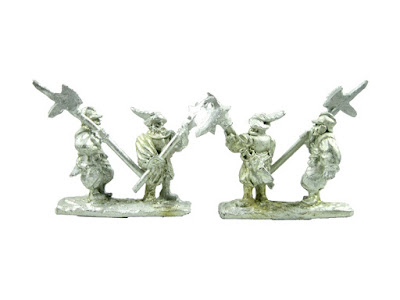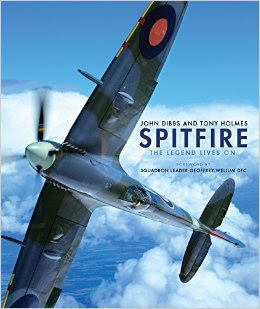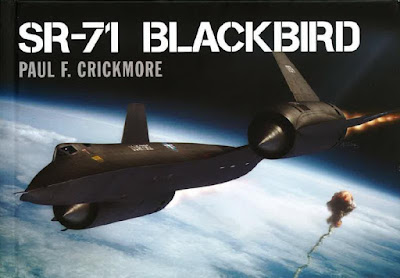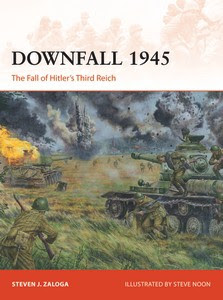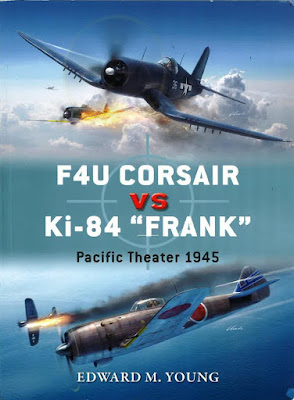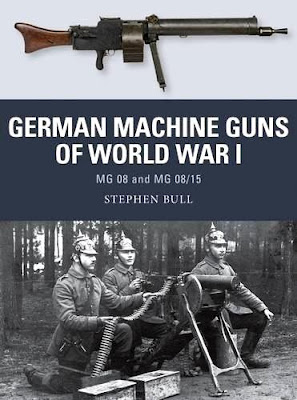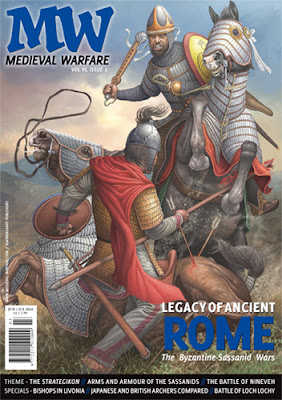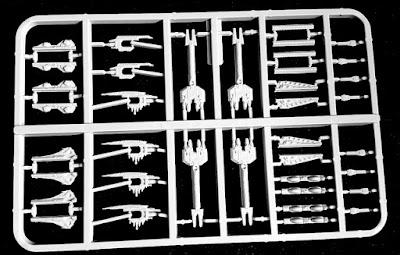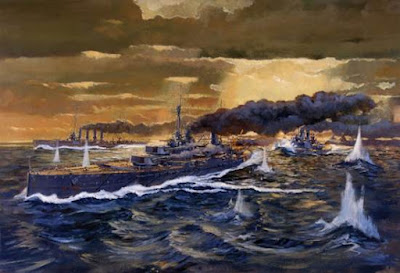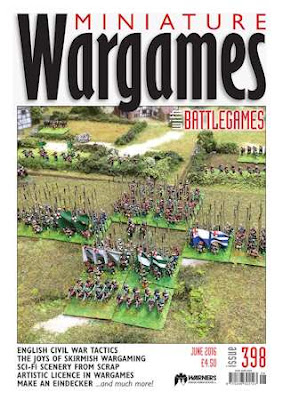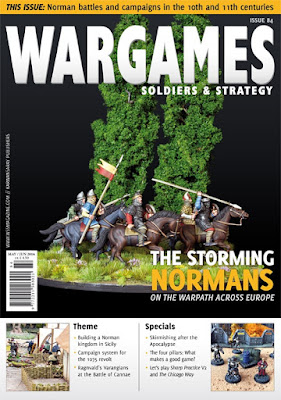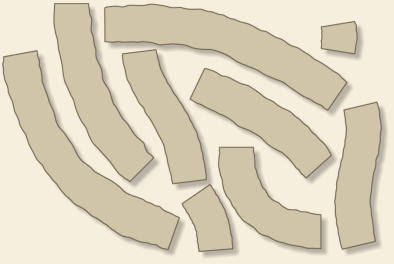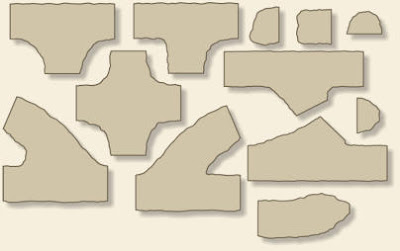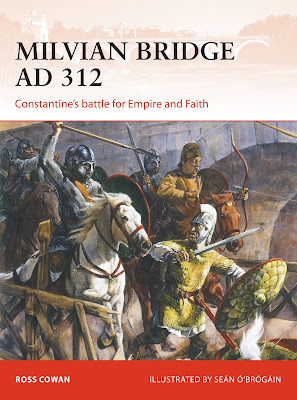May 27, 2016
Ancient Warfare X.2, Jun-Jul 2016
Wars in Hellenistic Egypt
Theme: Joshua J. Mark, "Kingdom of the Ptolemies - Historical introduction"
Egypt had been dominated by a foreign power since it fell to the Persians in 525 BC. When Alexander the Great conquered the Persian Empire in 331 BC, he founded the city of Alexandria as Egypt’s new capital. After his death, one of his generals, Ptolemy Lagides – afterwards known as Ptolemy I Soter (‘The Saviour’) – took control of Egypt and founded the Hellenistic dynasty that would bear his name. This Ptolemaic Dynasty would last until Egypt was taken under Roman rule in 30 BC.
Source: Michael J. Taylor, "Ptolemy the Pharaoh - The Raphia Decree"
The Battle of Raphia was one of the greatest battles of the Hellenistic world (see Ancient Warfare IV.6). Ptolemy IV, otherwise known as a slothful alcoholic, played an unexpectedly large role, personally rallying his phalanx to smash the Seleucid centre. To celebrate the triumph, a group of senior Egyptian priests, no doubt with the palace’s open encouragement and hearty approval, set up a series of commemorative stelae, written in Greek, Egyptian hieroglyphics, and demotic.
Theme: Matthew Beazley, "Thorakitai - Armed after the Roman fashion"
The Successor kingdoms all carried out military reforms in reaction to external threats. At the end of the third century BC, a new type of soldier appeared in written accounts. These soldiers were referred to as thorakitai (‘cuirassed men’) by ancient writers such as Polybius. They were heavy infantry employed in situations that would have been disadvantageous for a phalangite force.
Theme: Arnold Blumberg, "Stratiotes hos euergetai - Army and temple-building in Ptolemaic Egypt"
During the ca. 300 years the Ptolemies ruled Egypt, the nation’s military played a pivotal role in shaping the kingdom’s economic development, as well as creating an ethnically more integrated society. During the second and first centuries BC, this relationship was marked, among other things, by the funding, building, and dedication of religious temples by officers and common soldiers alike of the Egyptian army.
Theme: Marc G. DeSantis, "Egyptian leviathans - The battle fleet of Ptolemy II Philadelphus"
The fleet of Ptolemy II Philadephus of Egypt (r. 283–246 BC) was an extraordinary assortment of ships. As reported by Athenaeaus of Naucratis in his Deipnosophistae, this remarkable fleet contained some 224 ships in the categories of quadriremes, triremes, and lighter vessels, but what is most arresting about the Egyptian navy is the high number of large, even giant, warships that Ptolemy II possessed.
Theme: Sidney E. Dean, "Road to Antioch - The beginning of the end of Hellenistic rule in the East"
The six Syrian Wars between the Ptolemaic dynasty of Egypt and the Seleucids of Asia Minor seriously weakened the Hellenistic kingdoms. This benefited Rome, whose intervention to end the final Syrian War in 168 BC left Egypt dependent on the Senate’s protection. Continued inter-Hellenistic conflict in the decades following the Sixth Syrian War ultimately led to the loss of the Seleucid Empire’s eastern satrapies, and paved the way for Roman dominance over Egypt and Asia Minor. One pivotal moment was the 145 BC Battle of Antioch.
Theme: Alex Zakrzewski, "To the barricades! Urban warfare in ancient Alexandria"
In late 48 BC, Julius Caesar arrived in Alexandria in pursuit of his great rival Pompey Magnus. Though he was horrified to learn that the Egyptians had murdered Pompey, he was at the same time intrigued to discover the ruling Ptolemies in the midst of a dynastic civil war. The Alexandrians had no great love for their royal family, but they absolutely hated Roman interference in their affairs. When Caesar announced he was taking sides, the entire city rose up in revolt. The conqueror of Gaul suddenly found himself fighting a costly battle of survival in the streets of one of the ancient world’s great cities.
Theme: Seán Hußmann, "War of words - Rome and Egypt in the age of Mark Antony"
We tend to think of political propaganda as a modern invention, a devious method devised by the Stalins and Goebbels's of the industrialized world to influence the masses, incite them against a common enemy and legitimize their own worldview. Propaganda, however, has been around since humans started to organize in political communities.
Special: Paolo Morisi, "In the name of the Roman Empire - Roman military tombstones in Britain"
Although the Roman army often prevailed, many of its soldiers died by the sword and their butchered bodies dotted the battlefield. Whether Roman soldiers died in battle or of old age they were often buried under colourful tombstones that, along with the remains of forts and artefacts, represent a vital source of information about their war machine. These monuments not only afford us a glimpse of what Roman soldiers looked like, but also help us understand the importance of combat and war in ancient society.
Special: Jeroen Wijnendaele, "Enemy within - Barbarian recruits in the Late Roman Empire"
Generations of historians have often treated the large-scale recruitment of barbarians in the late Roman army as one of the root causes of the decline of the western Roman Empire. But evidence from both the literary and material sources for views on this so-called ‘barbarization’ of the field armies during the fourth century AD has been exaggerated and misinterpreted. On the contrary, the growing presence of barbarians in the Roman war machine did not diminish the Empire’s status as a Mediterranean superpower.
Hollywood Romans: Graham Sumner, "The Roman army on screen, part 4 - The Robe (1953) and Demetrius and the Gladiators (1954)"
Hoping to cash in on the success of Quo Vadis, rival studio Twentieth-Century Fox’s entry into the epic genre was The Robe, an adaptation of a bestselling novel written by Lloyd C. Douglas. The Robe was also the first film to be released in the new widescreen Cinemascope process, marketed as “the entertainment miracle you can see without glasses” – a sly comment on the then-current vogue for 3D movies.
Ancient Warfare
May 26, 2016
The Landsknecht Hellebardiere (Halberdiers) have arrived
The Landsknecht Hellebardiere (Halberdiers) have arrived! Our fourth Kickstarter is all finished up and we're now proudly offering our fifth product up for sale to everyone.
Landsknechte Doppelsöldner armed with halberds were often seen on the front line of pike blocks like their zweihänder armed brethren.
This is a Hellebardiere (Halberdiers) unit of fifteen strips of two figures each (30 figures total). You will recieve one standard bearer/musician strip (ls05a), eight column strips (a mix of ls05b–e) and six line strips (a mix of ls05f–h). Bases are not included.
Sculpted by Bob Naismith and cast by D & D Model Cleaning & Casting in lead free pewter.
TerraForms Tabletop Wargame Terrain 10mm/12mm scale
A wide-ranging, versatile, durable set of resin tabletop wargame terrain for use in any modern or sci fi game setting in 10 & 12mm scale.
We're gamers, we're fabricators, and we're passionate about work and play. We want to give you the best terrain you've seen, with the most customizable designs, and we want it to last a lifetime.
Our team has been gaming for pretty much all of our lives. We all started out gaming as kids with old school consoles, board games and pen-and-paper RPGs and moved into tabletop gaming and kept that love of games into adulthood. We've become familiar with (or played) countless tabletop games and we bring that knowledge of those games to this project, intentionally designing these for use with as many game systems as possible.
Our team has decades of combined experience in molding and casting, and we are working with other members of the casting industry, as well as 3D modelling, printing and prototyping industry. We are in direct contact with the people and companies to provide the resources to complete this project including fellow designers and casters and our product suppliers to get the ideal materials to bring you the best casts from the best molds possible.
We want to create a wide range of attractive, scenic, and durable terrain for you to use on your tabletop game, spice up your board games, and more.
We want to make them detailed and good looking, but customizable with a hobby knife and a cool paint job.
We also want them to be as modular as we can get them, so that you can create larger and more complex creations by mixing and matching, adding different buildings from all of our ranges to bring variety to your battlefield and creating a style for your game that you love.
We have already been working on this as a 'pet project' for some time now. We have a sizeable library of 3D designs many of which are already in the prototype and pre-mold phases. We initially began this venture as a personal project, just to make ourselves some cool custom terrain for our own gaming tables. People seeing our work began asking when we were going to have them ready for sale. That sparked the idea of going full production on these.
Initially we are releasing these kits for use with any 10mm to 12mm scale (or similar) game, roughly N scale model railroad or any board game that uses pieces of these sizes. If this campaign does as well as we hope, we have plans in place to expand our facility to produce in additional scales such as 6mm and 15mm so gamers in those scales can use our awesome terrain!
Our buildings are designed and cast with hollow interiors. You can cut away wall sections to create damaged buildings with a realistic look. Many have removable roofs, or the floors are stackable, modular sections. Doors, windows, and gates can be cut out. This also reduces weight to allow reasonable worldwide shipping rates. Many are cast as multiple sections that you can assemble in many different ways before gluing them together, or leave them un-glued to change the layout every time you play. You are only limited by your imagination!
AN IMPORTANT NOTE! We have priced our pledges and add-ons at a low price to bring you a better value over waiting until (or if?) we are funded and open our webstore! After the Kickstarter campaign concludes, all prices for terrain in our webstore will be higher than the prices you see in this campaign. There is a definite benefit to getting in early and helping us get funded from the start! Don't wait until it's too late!
Please bear in mind, certain pieces may undergo alterations during the design and prototype process. What we have in mind during the 3D design stage may not be reasonable to produce on a model. What you receive may differ somewhat from the images depicted. Keep up with project updates to see the evolution!
Other Concerns
-Shipping
Shipping will be handled at the conclusion of the kickstarter through our survey/pledge manager. We want to be as accurate and affordable as possible, so we won't be lumping everyone into giant categories that overcharge many of you around the world for shipping!
Depending on your country you may be required to pay additional shipping or customs fees, duties, VAT fees or other taxes for items shipped from the US. We are exploring other shipping options to reduce these to keep these sets as affordable as possible for everyone.
-Risk to Children
These pieces are cast resin some of which have small components. They are not to be used as toys for children, and are not intended for use by any person under the age of 10. Be a responsible gamer, don't let your toddlers chew on your terrain. It's not good for them. The kids that is. Well, or for the terrain either. You know what, just don't let anyone chew on terrain.
Video Soundtrack Credit - "Anxiety" by Kai Engel, CC BY 4.0
Risks and challenges
Our risks and challenges in this process are minimal. We already have our facility for molding and casting, we already have our 3D printers for prototyping, and we already have experience in creating resin model kits. We even have many of our prototypes already completed!
Our primary risk in this endeavour is underfunding. The mold making, initial casting, and packaging/shipping require significant investment for raw materials. If we are under funded we won't be able to produce multiple copies of molds, leading to drastically slowed production times and higher costs. The better we do, the more materials we can afford, and the faster the process will go!
Labor time also needs to be compensated, another part of the risk in underfunding. Our 3D artist creating stretch goal files, our production team post-processing, and master molds and casts will need to be covered before we can move forward with full scale production.
Another risk is that production will be taking place over prime hurricane season in Florida in the US. In the event of a hurricane there's not much we can do but prepare as best as we can. In the event that we are without power for an extended period of time, understand that our facility requires power to operate (vacuum pumps and pressure pots for casting for example) and we may have to back up the scheduling.
In the event of other unforeseen disasters at our facility we have a secondary resin casting facility available to us.
TerraForms Terrain Link no longer working
SOTCW Journal - Back Issue 60 Available
SOTCW members get back issues at a significant discount – around 80% off! See the latest Journal for details.
This is a back issue of the Society of Twentieth Century Wargamers (SOTCW) Journal.
The Society was formed in 1989, and since then, members have produced this magazine where they share knowledge, research and ideas about wargaming conflicts from 1900 onwards.
SOTCW
Osprey: Available Now, May 2016
Osprey titles that are now available for May 2016
Spitfire: The Legend Lives On
The Spitfire turns 80 on 5 March 2016, and the passion for the RAF's best-loved fighter is running at an all-time high. There are more than 50 Spitfires flying in the world today, and John Dibbs has shot virtually all of them 'on the wing' in his breathtaking style.
This eye-catching book combines a unique collection of stunning photos with poignant first-hand accounts of flying the aeroplane in combat, from some of the most famous aces to ever pilot the Spitfire, and from some of the pilots forgotten by history. Chronicling the history of the most iconic of British aircraft this is a 'must have' purchase for aviation enthusiasts.
CONTENTS
Foreword by Squadron Leader Geoffrey Wellum DFC
Introduction by Phill O'Dell
Author's Preface
The Early Marks
Spitfire Mk V
Spitfire Mk VIIIs
MH434
Spitfires in Blue
Packard Merlin Spitfire
Griffon Spitfires
Seafires
Spitfire Spectacular
From the Archive
SR-71 Blackbird
Lockheed's SR-71 Blackbird is one of the most iconic and famous jets ever built. Assembled in secret at Lockheed's Skunkworks, the Blackbird's vital statistics remain phenomenal decades later. It holds the airspeed record for a manned jet aircraft, operated at an altitude other aircraft could barely touch and was a marvel of technical engineering. Drawing on declassified material, leading SR-71 expert Paul Crickmore reveals the history of the most fascinating of aircraft, accompanied by a range of fantastic illustrations, photographs and facts about the world's most secret spy plane.
Contents
List of Abbreviations
Introduction
Chronology
A-12 Design and Manufacture
A-12 Oxcart Operations
Tagboard and Senior Bowl, the M-21 and D-21
Kedlock, the YF-12A
Senior Crown, the SR-71
Flying the SR-71
NASA Operations
Surviving Aircraft Histories
Appendices
Index
The SBS in World War II Paperback Edition
The Special Boat Squadron was Britain's most exclusive Special Forces unit during World War II. Highly trained, totally secretive and utterly ruthless, the SBS was established as an entity in its own right in early 1943. Unlike its sister unit, which numbered more than 1,000 men, the SBS never comprised more than 100. Led by men such as the famed Victoria Cross recipient Anders Lassen, the SBS went from island to island in the Mediterranean, landing in the dead of night in small fishing boats and launching savage hit and run raids on the Germans. Through unrivalled access to the SBS archives and interviews with the surviving members of the unit, Gavin Mortimer has pieced together the largely forgotten dramatic exploits of this elite fighting force. In this new and updated edition, featuring a plate section of photographs and additional content including new text, the unit and its members are finally granted the recognition that they so richly deserve.
Contents
Dedication
Acknowledgements
Introduction
Chapter 1. Birth of the Boat Service
Chapter 2. From Service to Squadron
Chapter 3. Sick in Sardinia
Chapter 4. A Close Call in Crete
Chapter 5. Armistice and Uncertainty
Chapter 6. The Germans Fight Back
Chapter 7. Defeat in the Dodecanese
Chapter 8. New Recruits for a New Year
Chapter 9. Piracy on the High Seas
Chapter 10. Turkish Deceit for the SBS
Chapter 11. Caught, Questioned, Vanished
Chapter 12. Vengeance
Chapter 13. Germany on the Run
Chapter 14. Into the Balkans
Chapter 15. The Nazis' Greek Tragedy
Chapter 16. Adriatic Offensive
Chapter 17. Andy Lassen's Big War
Chapter 18. The End of the Odyssey
Glossary
Endnotes
Bibliography
Index
Downfall 1945
As the final month of fighting in Europe in 1945 dawned the Allies embarked upon a series of mopping up operations, destroying the last centres of German resistance as the essentially defeated Wehrmacht fought on in increasingly desperate conditions, driven on by the explicit no surrender order issued by Hitler.
Yet at the same time, the Allied alliance was already on shaky ground, as German resistance was crushed the Allies began to eye each other nervously across a battle torn Europe, with the politically driven military decisions to have a huge impact on the future of the continent. This book traces the final operations of the war, from the liberation of Denmark, the Allied drive towards the Baltic straits, incursions in Yugoslavia, Hungary, Czechoslovakia and engagements in Eastern and Western Germany, whilst also analyzing how the Allied strategies in the final days of the war were a hint of the future difficulties that would drive the Cold War.
Contents
Introduction
Chronology
Opposing commanders
Opposing armies
Opposing plans
The campaign
Aftermath
The battlefield today
Further reading
Index
Operation Totalize 1944
In Operation Totalize, Lieutenant-General Guy Simonds' II Canadian Corps launched an attack from its positions along the Bourguébus Ridge south of Caen, striking south-southeast astride the main Caen-Falaise road toward the high ground that dominated the town of Falaise and the key west-east lateral road that ran through this town. Using sophisticated operational art the initial break-in achieved rapid success; indeed, more tactical success than any previous Allied break-in attack in Normandy.
However, despite this rapid initial success, Totalize did not subsequently secure a decisive operational-level victory. Indeed, Simonds' forces subsequently struggled swiftly to complete the second break-in battle, and to transit into rapid exploitation operations. Had Simond's force been successful the German army may not have been able to extract themselves from the Falaise pocket and would have been surrounded and defeated - possibly bringing about the early end of the war in Europe.
Contents
Introduction
Chronology
Opposing commanders
Opposing armies
Opposing plans
The campaign
Aftermath
The battlefield today
Further reading
Index
F4U Corsair vs Ki-84 Frank
The Vought Corsair was the first American single-engined fighter to exceed 400 mph and establish dominance over the legendary Mitsubishi Type Zero-sen. The Ki-84 Hayate was introduced by the Japanese specifically to counter this growing American dominance of the skies over the Pacific. Built in greater numbers than any other late war Japanese fighter, nearly 3000 were completed between 1944 and 1945. This volume examines the clashes between the Corsair and Ki-84 in the closing stages of the war, revealing how Corsair pilots had to adapt their techniques and combat strategies to adapt to these newer types. It also reveals how the kill rate was largely driven by the reduced quality of fighter pilots after the high casualty rates inflicted on the Japanese air force during the air battles over the Solomon Islands.
Contents
Introduction
Chronology
Design and Development
Technical Specifications
The Strategic Situation
The Combatants
Combat
Statistics and Analysis
Aftermath
Further Reading
Index
US Army Rangers 1989-2015
Written by an expert on modern Special Forces units and the operations they undertake, this book explains the evolution of the Rangers' missions in Panama, the first Gulf War, Somalia and the post 9/11 invasions of Iraq and Afghanistan. It reveals the training and organizational changes that the unit has undergone and investigates in particular how their doctrine and tactics have changed during the 14-year war in Afghanistan.
At the beginning of the war the Rangers were an elite light infantry unit of picked men tasked with short duration recon raids and securing ground behind enemy lines in support of Special Forces; they have since evolved into a special-mission unit themselves - on the cusp of being assigned to the Joint Special Operations Command.
Contents
Introduction - the ‘ranger' in history, as a behind-the-lines guerrilla soldier - the US Army Rangers, from World War II to Vietnam and after
Changes in structure and operational remit since the 1980s - Ranger Indocrination Program, Ranger Assessment & Selection Program, Ranger School, and the Ranger Regiment
Operation Just Cause: Panama, 1989 - the Rangers' last ‘conventional war'
Op Desert Storm: Iraq, 1991 - from combat search-and-rescue to long-range heliborne assault
Op Gothic Serpent: Somalia, 1993 - the lessons of ‘Black Hawk Down!'
Op Enduring Freedom: Afghanistan, 2001-present - the wide range of missions accomplished, and coordination with other special units
Op Iraqi Freedom, 2003-1010 - from hunting Scuds, to hunting down al-Qaeda as part of the JSOC Task Force - comparisons with Afghanistan
The evolution of the modern Ranger - the Ranger Reconaissance Company & Regimental Special Troops Battalion
The future
Weapons, equipment and vehicles
Bibliography
British Guided Missile Destroyers
In the years after World War II, new guided missile technology offered surface ships the chance to destroy airborne threats from afar, thereby preserving their role in naval warfare. This book examines the technology and combat performance of Britain's guided missile destroyers over half a century.
Uniquely among modern destroyers, three of these classes have been tested in battle against the aircraft and missiles of another modern navy - in the Falklands War - as well as being deployed during the Gulf War. Written by an expert on British naval technology, this book assess the changing technology of the Royal Navy's destroyers over half a century, including an examination of the Royal Navy's newest and most capable warship, the Type 45.
Contents
Introduction: the maritime air threat and the defensive missile
The County-class destroyers
The Type 82 destroyer: HMS Bristol
The Type 42: Sheffield-class destroyers
The Type 45: Daring-class destroyers
Operational Service
Conclusion
Bibliography
Index
German Machine Guns of World War I
World War I's defining weapon for many, Germany's MG 08 machine gun won a formidable reputation on battlefields from Tannenberg to the Somme. Although it was a lethally effective weapon when used from static positions, the MG 08 was far too heavy to perform a mobile role on the battlefield. As the British and French began to deploy lighter machine guns alongside their heavier weapons, the Germans fielded the Danish Madsen and British Lewis as stopgaps, but chose to adapt the MG 08 into a compromise weapon - the MG 08/15 - which would play a central role in the revolutionary developments in infantry tactics that characterized the last months of the conflict. In the 1940s, the two weapons were still in service with German forces fighting in a new world war. Drawing upon eyewitness battlefield reports, this absorbing study assesses the technical performance and combat record of these redoubtable and influential German machine guns, and their strengths and limitations in a variety of battlefield roles.
Contents
Introduction
Development
Use
Impact
Conclusion
Bibliography
Index
The M3 Grease Gun
Influenced by the German MP 40 and the British Sten, the .45-caliber M3 "Grease Gun” served as the primary US submachine gun for almost a half-century. Designed to replace the expensive Thompson SMG, the M3 was issued to airborne troops and others during World War II thanks to its compact design with sliding wire stock. An improved variant, the M3A1, was favored by armored crews right up to the beginning of the 1990s, seeing service in 1991's Operation Desert Storm. In Korea and Vietnam, reconnaissance troops and special-operations forces were at times armed with the M3A1 - also available in a suppressed version - and it was the first SMG issued to the US counterterrorist unit Delta Force. Featuring full-color artwork, first-hand accounts, and archive and close-up photographs, this is the engaging story of the M3 submachine gun.
Contents
Introduction
Development
Use
Impact
Conclusion
Bibliography
Index
Osprey Publishing Ltd
Spitfire: The Legend Lives On
The Spitfire turns 80 on 5 March 2016, and the passion for the RAF's best-loved fighter is running at an all-time high. There are more than 50 Spitfires flying in the world today, and John Dibbs has shot virtually all of them 'on the wing' in his breathtaking style.
This eye-catching book combines a unique collection of stunning photos with poignant first-hand accounts of flying the aeroplane in combat, from some of the most famous aces to ever pilot the Spitfire, and from some of the pilots forgotten by history. Chronicling the history of the most iconic of British aircraft this is a 'must have' purchase for aviation enthusiasts.
CONTENTS
Foreword by Squadron Leader Geoffrey Wellum DFC
Introduction by Phill O'Dell
Author's Preface
The Early Marks
Spitfire Mk V
Spitfire Mk VIIIs
MH434
Spitfires in Blue
Packard Merlin Spitfire
Griffon Spitfires
Seafires
Spitfire Spectacular
From the Archive
SR-71 Blackbird
Lockheed's SR-71 Blackbird is one of the most iconic and famous jets ever built. Assembled in secret at Lockheed's Skunkworks, the Blackbird's vital statistics remain phenomenal decades later. It holds the airspeed record for a manned jet aircraft, operated at an altitude other aircraft could barely touch and was a marvel of technical engineering. Drawing on declassified material, leading SR-71 expert Paul Crickmore reveals the history of the most fascinating of aircraft, accompanied by a range of fantastic illustrations, photographs and facts about the world's most secret spy plane.
Contents
List of Abbreviations
Introduction
Chronology
A-12 Design and Manufacture
A-12 Oxcart Operations
Tagboard and Senior Bowl, the M-21 and D-21
Kedlock, the YF-12A
Senior Crown, the SR-71
Flying the SR-71
NASA Operations
Surviving Aircraft Histories
Appendices
Index
The SBS in World War II Paperback Edition
The Special Boat Squadron was Britain's most exclusive Special Forces unit during World War II. Highly trained, totally secretive and utterly ruthless, the SBS was established as an entity in its own right in early 1943. Unlike its sister unit, which numbered more than 1,000 men, the SBS never comprised more than 100. Led by men such as the famed Victoria Cross recipient Anders Lassen, the SBS went from island to island in the Mediterranean, landing in the dead of night in small fishing boats and launching savage hit and run raids on the Germans. Through unrivalled access to the SBS archives and interviews with the surviving members of the unit, Gavin Mortimer has pieced together the largely forgotten dramatic exploits of this elite fighting force. In this new and updated edition, featuring a plate section of photographs and additional content including new text, the unit and its members are finally granted the recognition that they so richly deserve.
Contents
Dedication
Acknowledgements
Introduction
Chapter 1. Birth of the Boat Service
Chapter 2. From Service to Squadron
Chapter 3. Sick in Sardinia
Chapter 4. A Close Call in Crete
Chapter 5. Armistice and Uncertainty
Chapter 6. The Germans Fight Back
Chapter 7. Defeat in the Dodecanese
Chapter 8. New Recruits for a New Year
Chapter 9. Piracy on the High Seas
Chapter 10. Turkish Deceit for the SBS
Chapter 11. Caught, Questioned, Vanished
Chapter 12. Vengeance
Chapter 13. Germany on the Run
Chapter 14. Into the Balkans
Chapter 15. The Nazis' Greek Tragedy
Chapter 16. Adriatic Offensive
Chapter 17. Andy Lassen's Big War
Chapter 18. The End of the Odyssey
Glossary
Endnotes
Bibliography
Index
Downfall 1945
As the final month of fighting in Europe in 1945 dawned the Allies embarked upon a series of mopping up operations, destroying the last centres of German resistance as the essentially defeated Wehrmacht fought on in increasingly desperate conditions, driven on by the explicit no surrender order issued by Hitler.
Yet at the same time, the Allied alliance was already on shaky ground, as German resistance was crushed the Allies began to eye each other nervously across a battle torn Europe, with the politically driven military decisions to have a huge impact on the future of the continent. This book traces the final operations of the war, from the liberation of Denmark, the Allied drive towards the Baltic straits, incursions in Yugoslavia, Hungary, Czechoslovakia and engagements in Eastern and Western Germany, whilst also analyzing how the Allied strategies in the final days of the war were a hint of the future difficulties that would drive the Cold War.
Contents
Introduction
Chronology
Opposing commanders
Opposing armies
Opposing plans
The campaign
Aftermath
The battlefield today
Further reading
Index
Operation Totalize 1944
In Operation Totalize, Lieutenant-General Guy Simonds' II Canadian Corps launched an attack from its positions along the Bourguébus Ridge south of Caen, striking south-southeast astride the main Caen-Falaise road toward the high ground that dominated the town of Falaise and the key west-east lateral road that ran through this town. Using sophisticated operational art the initial break-in achieved rapid success; indeed, more tactical success than any previous Allied break-in attack in Normandy.
However, despite this rapid initial success, Totalize did not subsequently secure a decisive operational-level victory. Indeed, Simonds' forces subsequently struggled swiftly to complete the second break-in battle, and to transit into rapid exploitation operations. Had Simond's force been successful the German army may not have been able to extract themselves from the Falaise pocket and would have been surrounded and defeated - possibly bringing about the early end of the war in Europe.
Contents
Introduction
Chronology
Opposing commanders
Opposing armies
Opposing plans
The campaign
Aftermath
The battlefield today
Further reading
Index
F4U Corsair vs Ki-84 Frank
The Vought Corsair was the first American single-engined fighter to exceed 400 mph and establish dominance over the legendary Mitsubishi Type Zero-sen. The Ki-84 Hayate was introduced by the Japanese specifically to counter this growing American dominance of the skies over the Pacific. Built in greater numbers than any other late war Japanese fighter, nearly 3000 were completed between 1944 and 1945. This volume examines the clashes between the Corsair and Ki-84 in the closing stages of the war, revealing how Corsair pilots had to adapt their techniques and combat strategies to adapt to these newer types. It also reveals how the kill rate was largely driven by the reduced quality of fighter pilots after the high casualty rates inflicted on the Japanese air force during the air battles over the Solomon Islands.
Contents
Introduction
Chronology
Design and Development
Technical Specifications
The Strategic Situation
The Combatants
Combat
Statistics and Analysis
Aftermath
Further Reading
Index
US Army Rangers 1989-2015
Written by an expert on modern Special Forces units and the operations they undertake, this book explains the evolution of the Rangers' missions in Panama, the first Gulf War, Somalia and the post 9/11 invasions of Iraq and Afghanistan. It reveals the training and organizational changes that the unit has undergone and investigates in particular how their doctrine and tactics have changed during the 14-year war in Afghanistan.
At the beginning of the war the Rangers were an elite light infantry unit of picked men tasked with short duration recon raids and securing ground behind enemy lines in support of Special Forces; they have since evolved into a special-mission unit themselves - on the cusp of being assigned to the Joint Special Operations Command.
Contents
Introduction - the ‘ranger' in history, as a behind-the-lines guerrilla soldier - the US Army Rangers, from World War II to Vietnam and after
Changes in structure and operational remit since the 1980s - Ranger Indocrination Program, Ranger Assessment & Selection Program, Ranger School, and the Ranger Regiment
Operation Just Cause: Panama, 1989 - the Rangers' last ‘conventional war'
Op Desert Storm: Iraq, 1991 - from combat search-and-rescue to long-range heliborne assault
Op Gothic Serpent: Somalia, 1993 - the lessons of ‘Black Hawk Down!'
Op Enduring Freedom: Afghanistan, 2001-present - the wide range of missions accomplished, and coordination with other special units
Op Iraqi Freedom, 2003-1010 - from hunting Scuds, to hunting down al-Qaeda as part of the JSOC Task Force - comparisons with Afghanistan
The evolution of the modern Ranger - the Ranger Reconaissance Company & Regimental Special Troops Battalion
The future
Weapons, equipment and vehicles
Bibliography
British Guided Missile Destroyers
In the years after World War II, new guided missile technology offered surface ships the chance to destroy airborne threats from afar, thereby preserving their role in naval warfare. This book examines the technology and combat performance of Britain's guided missile destroyers over half a century.
Uniquely among modern destroyers, three of these classes have been tested in battle against the aircraft and missiles of another modern navy - in the Falklands War - as well as being deployed during the Gulf War. Written by an expert on British naval technology, this book assess the changing technology of the Royal Navy's destroyers over half a century, including an examination of the Royal Navy's newest and most capable warship, the Type 45.
Contents
Introduction: the maritime air threat and the defensive missile
The County-class destroyers
The Type 82 destroyer: HMS Bristol
The Type 42: Sheffield-class destroyers
The Type 45: Daring-class destroyers
Operational Service
Conclusion
Bibliography
Index
German Machine Guns of World War I
World War I's defining weapon for many, Germany's MG 08 machine gun won a formidable reputation on battlefields from Tannenberg to the Somme. Although it was a lethally effective weapon when used from static positions, the MG 08 was far too heavy to perform a mobile role on the battlefield. As the British and French began to deploy lighter machine guns alongside their heavier weapons, the Germans fielded the Danish Madsen and British Lewis as stopgaps, but chose to adapt the MG 08 into a compromise weapon - the MG 08/15 - which would play a central role in the revolutionary developments in infantry tactics that characterized the last months of the conflict. In the 1940s, the two weapons were still in service with German forces fighting in a new world war. Drawing upon eyewitness battlefield reports, this absorbing study assesses the technical performance and combat record of these redoubtable and influential German machine guns, and their strengths and limitations in a variety of battlefield roles.
Contents
Introduction
Development
Use
Impact
Conclusion
Bibliography
Index
The M3 Grease Gun
Influenced by the German MP 40 and the British Sten, the .45-caliber M3 "Grease Gun” served as the primary US submachine gun for almost a half-century. Designed to replace the expensive Thompson SMG, the M3 was issued to airborne troops and others during World War II thanks to its compact design with sliding wire stock. An improved variant, the M3A1, was favored by armored crews right up to the beginning of the 1990s, seeing service in 1991's Operation Desert Storm. In Korea and Vietnam, reconnaissance troops and special-operations forces were at times armed with the M3A1 - also available in a suppressed version - and it was the first SMG issued to the US counterterrorist unit Delta Force. Featuring full-color artwork, first-hand accounts, and archive and close-up photographs, this is the engaging story of the M3 submachine gun.
Contents
Introduction
Development
Use
Impact
Conclusion
Bibliography
Index
Osprey Publishing Ltd
Medieval Warfare VI-3, May-Jul 2016
The Byzantine-Sassanid Wars
Theme: William E. Welsh, "The Byzantine-Sassanid Wars - Bitter rivals"
From the ashes of the Parthian Empire, laid waste by Roman legions in AD 224, emerged a more aggressive successor state. The Sasanian kings were as skilled at diplomacy as they were at warfare. In the late fifth century, the Sasanians began a series of protracted wars with the Byzantines along their heavily fortified common border. After a string of limited wars on the frontier, the rivalry exploded into total war.
The source: Murray Dahm, "The Strategikon and the Sassanids - Learning from the enemy"
The Strategikon – a Byzantine military handbook purportedly by the Emperor Maurice (r. 582–602) – offers remarkable insights into the waging of warfare between the Sassanid and Byzantine empires. In Book 11.1, the author of the work distils all that he has observed and learned about how the Sassanids make war. Not only that, he follows this advice on how a commander could go about defeating such an enemy.
The reenactor: Nadeem Ahmad, "Arms and armour of Sasanian Iran - Arming the knights of the Shahs"
The Sasanian dynasty ruled over Iran, much of the Near East, and parts of Central Asia between the mid-third and the mid-seventh centuries AD. They followed on from the Arsacid (Parthian) dynasty and were a conduit for many Central-Asian influences into Iran and Europe. Their influence can be felt even in the modern day as they helped shape the way that nations, states, and courts functioned throughout Asia.
Theme: Haggai Olshanetsky, "Justinian's army at war - Fields of Byzantium"
Some claim that Justinian I (r. AD 527–565) was effectively the last of the Roman emperors. It is based on the nature of Justinian’s government – the legislation and the desire to impose his rule on the territories lost through the collapse of the Western Roman Empire in AD 476, when Emperor Romulus Augustulus was deposed by the Gothic leader Odoacre (also referred to as Odoacer or Odovacar).
Theme: Daan Nijssen, "Historical background of the 602–628 war - What inspired Khosrow?"
The ancient feud between Romans and Persians reached a climax in the war of 602–628. This war surpassed all earlier Roman-Persian wars in scale and destructiveness. The main cause for the escalation of this war was Khosrow’s fanaticism and his unwillingness to make peace in 610. Instead of accepting Heraclius’s peace offer, Khosrow decided to exhaust his reserves of wealth and manpower on a (self-)destructive war to destroy Byzantium. What inspired him to make this choice?
Silver plate with mercury gilding, depicting a hunting scene from the tale of Bahram Gur and Azadeh. Sasanian; dated to the fifth century AD. Now in the Metropolitan Museum of Art in New York.Theme: Sidney E. Dean, "Battle of Nineveh, 12 December AD 627 - Byzantium's Pyrrhic victory"
After a decade on the defensive against the seemingly unstoppable Sassanids, Byzantine Emperor Heraclius I initiated a counter-offensive in AD 622. Between 624 and 626 he defeated five Persian field armies including one led by Shah Khosrow II himself. Heraclius devastated northern portions of the Sassanid Empire, encouraged his Göktürk allies to do the same, and campaigned in the Caucasus to capture or neutralize Persian client states. By 627 he felt ready to launch a decisive blow against his weakened enemy.
The weapon: Owen Rees, "Comparing archers of Japan and Britain"
An examination of two societies, and the archer’s position within them, can reveal a great understanding of not only the archer, but also the place of the bow within the warfare of the period. By comparing two different cultures a contrast and exploration can occur as to the different roles that the archer can fill, something which using only one example cannot fully appreciate.
Special: Artis Aboltins & Santa Jansone, "Crusades in the East Baltic region"
When crusades are mentioned, most people immediately think of the events in the Holy Land, and tend to overlook the events that took place in Northern Europe in the late twelfth and most of the thirteenth centuries. However, those ‘Northern Crusades’ played a very important part in shaping the history of the entire region.
A battle between fighters at Loch Lochy. See the text box on this page for further details.The battle: Ross Cowan, "The Battle of Loch Lochy, AD 1544 - More like lions than men"
On 15 July 1544, Hugh Fraser, the third Lord Lovat, marched northwards along the bank of Loch Lochy. The chief of the Frasers was accompanied by his son and heir, Simon, the Master of Lovat, and his nephew, Ranald Gallda, claimant to the title of Captain of Clanranald. They were followed by 400 warriors, drawn from the leading gentlemen and able men of Clan Fraser. This host was about to fight one of the most celebrated battles in Highland history.
Movie knights: Murray Dahm, "Medieval warfare in film - King Arthur II"
In our last Movie Knights article, we briefly examined general depictions of King Arthur in film. This time we’ll delve into the specifics of several films and examine their depiction of the warfare: especially John Boorman’s Excalibur (1981), Monty Python and the Holy Grail (1975), and Knights of the Round Table (1953).
Medieval Warfare
May 25, 2016
Wargames Illustrated Reviews 10mm Napoleonic Naval Range
Here, you can find the review in Wargames Illustrated Online by Paul Davies of our 10mm Napoleonic ships. Specially designed to play with our Squadron Commander – Small Naval Actions rules and our 10mm Naval Ships and Crews range.
May 24, 2016
Aster Wargame are selling TB Line
Aster Wargames has started selling the TB Line which disappeared a while back, and over the next few weeks more and more of the old range will be added to the site.
TB4166
It contains 12 knights multi pose. The pieces are of metal and unpainted.
So this is certainly something to look forward to.
Aster Wargame
Labels:
Newss
Location:
Via Delle Azalee, 98, 00172 Roma, Italy
Dropfleet Commander Previews
A happy Saturday from here in a cloudy but bright South London!
We are happy to be able to show off a few more sprues.
The UCM:
UCM Frigate Sprue
UCM Cruiser Sprue
We are really excited about being able to get these together into the sets and start getting backing rewards out to everyone who backed this Kickstarter.
We have been hard at work recruiting some great people and our first staff member is now two weeks into his role. We are doing our best still to ensure that every issue with the pledge manager and other backing enquiries are resolved as quickly as possible. We are grateful for your patience as we both grow our team to ensure these issues are resolved faster, but also for the time that it has taken for some of us to get back to you. Thank you for your continued support and faith in us.
From a Dropzone Commander and general Universe point of view, we will soon be releasing Dropzone Commander Reconquest: Phase 2. We are really excited about this also, as it contains many of the recent releases, along with a few upcoming releases. Keep an eye out on our social media for this!
On the 3rd (to the 5th) of June we will be at UK Games Expo (in Birmingham, UK), where we will have some of our first public demos of Dropfleet Commander, along with demos of Dropzone Commander too. We will also have a whole range of the miniatures there.
Then on the 16th (to the19th) of June we will be at Origins (in Columbus, Ohio, USA), where again we will have a whole range of models and be doing some more demos of Dropfleet Commander! Make sure if you are keen, that you come along to get a game in at one of these events!
We look forward to seeing as many of you as can make it, over the next few months!
Another update will be on its way soon...
The Hawk Wargames Team
Kickstarter
TTCombat
Osprey: 20% Off Men-at-Arms & Elite
May Discount – 20% Off Men-at-Arms & Elite
This month, we are offering 20% off our Men-at-Arms and Elite series, giving you the perfect opportunity to build up your collection. The discount applies to print and eBooks, so regardless of what format you are after, you can be sure to get a great deal.
As always, Gold and Silver members can use this offer alongside their existing membership discounts.
Buy Now!
Osprey Publishing Ltd
Osprey: The Jutland Centenary
Tuesday, 31 May, marks the 100th anniversary of the Battle of Jutland, the largest naval battle of the First World War. Over 8,000 men lost their lives as the British and German navies clashed in the North Sea.
We will be commemorating the centenary in a number of ways on Twitter, Facebook and our blog, so be sure to follow us if you haven't already. Alongside all of this, we will also be offering a 25% discount on selected Jutland titles. Be sure to head to the Osprey site on 31 May for more information!
Osprey Publishing Ltd
SOTCW Journal - Subscription 10 Released
SOTCW members get back issues at a significant discount – around 80% off! See the latest Journal for details.
This is a set of back issues of the Society of Twentieth Century Wargamers (SOTCW) Journal.
Issues included:
Journal 59 (pages 7, 28, 29, 40, 41, and 56 are scans)
Journal 60
Journal 61
Journal 62 (pages 20 & 21 are scans)
Journal 63
Journal 64
The Society was formed in 1989, and since then, members have produced this magazine where they share knowledge, research and ideas about wargaming conflicts from 1900 onwards.
SOTCW
May 23, 2016
SOTCW Journal - Subscription 15 Released
This subscription will include six issues of the SOTCW Journal, numbers 89 to 94.
The Journal is packed with reviews, articles, scenarios, rules, letters, advertisements, traders comments and offers.
During the time of the subscription, you will also be a member of the SOTCW. Many traders offer discounts to SOTCW members.
As Journals 89 to 94 are released, they will be added to this product, and those who have purchased it will be able to download them from their libraries.
Some back issues are now available here at Wargame Vault. Members get a huge (about 80%) discount on back issues. See the latest Journal for details.
Note that Journal 89 is due at the end of November 2016.
The current price includes a 10% discount for early subscriptions. The price will go up when Journal 89 is released.
SOTCW
May 13, 2016
Miniature Wargames 398, June 2016
The show season is in full swing and at last, the weather is warm, so there's plenty of reading material in this month's issue to keep you busy. Coming on Friday, 20th of May.
In The Stalin Line, the second instalment of The red empire strikes back – fighting the Great Patriotic War one battle at a time, Andrew Rolph continues his series of Ostfront scenarios with a classic situation of a small, elite, mobile force taking on a big, lumbering enemy in fixed positions.
The Editor is delighted to present a major piece, Push of pike and dint of butt, English Civil War tactics in wargames by Andy Copestake, coming as it does at just the right time for his own ECW project. Sit back, relax and absorb these nuggets of wisdom from a real aficionado of the period.
In Eindecker Part 3, Tony Harwood cheekily adds a third instalment to Chris Russell's WWI air warfare series, describing how to build your very own dogfighting monoplane. With step-by-step photos taken by Tony as he was working on the project.
American writer Robert Piepenbrink makes a welcome return, and With a fistful of figures presents a dozen ideas for small games that require, in most cases, no more than a couple of handfuls of figures. Small can, indeed, be beautiful as he proves right here.
In The look of the thing – artistic licence in wargaming, Arthur Harman asks whether aesthetics should be allowed to dominate our enjoyment of a wargame, or deter us from getting stuck in. Is our terror of the roving photographer or blogger to blame?
Further thoughts on inspiration has David R Clemmet and Thomas Davidson asking how we attract new blood into the hobby, and they outline their vision for a new show designed to encourage cross-fertilization between different creative hobbies.
And finally, we have an extended show report from Salute 2016 by Neil Shuck.
Of course, we have our regular spots too:
In his Briefing, The Editor finds himself at a happy conjunction, where several articles coincidentally arrived together to help answer the 'overcoming the greying of the hobby' conundrum; and in his World Wide Wargaming, he continues his research into English Civil War gaming, discovers the joys of Google hangouts, and this month has three Blogs of the Month.
Neil Shuck uses his Forward Observer column to discuss the scales we use to play skirmish wargames, gives us some tips for deciding whether to invest in new games, and finds himself looking at old toys in new ways.
Diane Sutherland gives us The Gates of Azera in her Continuing tales of a wargames widow. She has given husband Jon a good roasting for demanding a theme this month that is more Arabica than Araby. So, grinding away at the problem of sci-fi structures, she comes up with an instant solution expressly designed to have you feeling full of beans.
In Fantasy Facts, John Treadaway has some post-Salute thoughts before plunging into another batch of genre goodies, including one for fans of Gerry Anderson's Supermarionation shows.
Boardgame specialist Brad Harmer-Barnes explores the second wave of pulp gaming – what he calls 'VHS Gaming' – in Hex encounter.
In his Send three and fourpence column, Conrad Kinch insists we should be cutting to the chase, and has some handy tips for ensuring that you make the most of your precious gaming time.
Of course we have our Battlegames Combat Stress Appeal; our regular review slot Recce; and finally, our competition this month features the 100 Years War range from Old Glory UK, with no less than four £25.00 GBP vouchers to be won.
The front cover photo, taken by The Editor, is of just a fraction of the delightful 10mm English Civil War miniatures in the collection of Suffolk Gamer Andrew Brentnall. There are a couple more photos of them accompanying Andy Copestake's article.
Remember also to check out the new downloads section on the new website at for additional material for Andrew Rolph's article.
Miniature Wargames
Labels:
1 Magazines
Location:
17 Granville Rd, Hove BN3 1TG, UK
May 10, 2016
Wargames, Soldiers & Strategy, 84, May 2016
The Normans across Europe
Column: Rick Priestley, "This Gaming Life - Whoever thought that was a good idea?"
I was leafing through the latest WS&S the other day when it struck me. Every article and pretty much every page revealed to us vistas of battle, battalions of recruits, the latest creations of our most talented sculptors, … and every model of every warrior was what we would call 28mm scale.
Feature: Eoghan Kelly, "The Battle of Fairfax Courthouse - Crucial Skirmish"
When the first shots of the Civil War were fired in April of 1861, Virginia’s secession was all but achieved, though the popular vote to ratify this did not take place until 23 May. In the meantime, Robert E. Lee had been appointed commander of its armed forces.
Feature: Tim Whitworth, "Cross-overs and an unusual army for Hail Caesar - Choose your poison"
Towards the end of 2014, I found myself facing early retirement and a fair amount of time on my hands. My new local gaming store catered largely to card games and a few sci-fi and fantasy tabletop gamers. I volunteered to run a series of historical games at the venue to determine the appetite for crossing over into historical wargaming. The Hail Caesar rules set with its fantasy pedigree was the ideal choice and the owner duly agreed to stock some rule books and figure sets.
‘We saw it first!’ Fighting over salvage.
Feature: Jamie Gordon, "It's the end of the world as we know it - Gamin after the fall out"
“I know not with what weapons World War III will be fought, but World War IV will be fought with sticks and stones.”
This insightful quote by Albert Einstein suggests that the sheer potency of weapons that would be deployed in a potential Third World War would be so colossal that they would reduce the survivors to an almost Stone Age level of technology for subsequent conflicts. Whilst this quotation is most likely an accurate representation of the inevitable result of a nuclear armageddon, there are those wargamers among us who believe that we know better.
Feature: Warwick Kinrade, "What really makes a good game - The four pillars of wargaming"
This article deals with a simple but sometimes perplexing question. What makes a good wargame? It’s a subject that concerns me, because ever since I can remember, I’ve always wanted my wargames to be better – and by that, I really mean more enjoyable for me. Most players end each game with an exchange of handshakes and a polite “Good game!” But what do those two words actually mean?
Feature: David R. Clemmet & Thomas Davidson, "The future of the wargames show - A sunny outlook"
We have all read – via all the usual outlets – a variety of views and ideas about the future of the hobby, and in particular, the future of the small to medium-sized wargames shows, given that the internet has had a dramatic impact on the spending pattern of wargamers.
Feature: Phil Mansfield, "Building a Normandy invasion layout - Project Sword Beach"
My interest in D-Day stems from the epic war movie The Longest Day and playing with the Airfix kits that I regularly used to assault the defences of occupied Europe. This passion has remained strong throughout my gaming years. I visited the beaches ten years ago and my family will be holidaying in Normandy this summer. My wargaming interest has developed from my love of history and I’ve always been inspired by photos of beautifully painted figures on equally well-presented terrain.
Aggressive armies and strong fortifications were hallmarks of the Norman way of war.
Theme: Michael Hoddinott, "From Ireland to the Holy Land - Dynasty:Norman-style"
If you wandered down any local high street and grabbed a passer-by to answer the query, “Who were the Normans?”, they would most likely reply that they were something to do with 1066 and all that. A few may mention that the Normans were involved with the earlier crusades in some way, but fewer still would be able to remark upon any of the other realms of conflict that featured the Normans.
Theme: Mike Hoddinott, "The founding of the Kingdom of Sicily - The Norman godfather"
The region of Sicily and southern Italy marked a boundary between Latin Europe and Greek (or Orthodox) culture. It was an important area for both cultures in terms of pilgrimage, primarily because of the shrine dedicated to Saint Michael the Archangel at Apulia, in south-east Italy. As Saint Michael, in the New Testament of the Bible, fought a ferocious battle with Satan, he was celebrated as a military figure by many emperors, kings, and soldiers, particularly in southern Italy.
Theme: Mark Backhouse, "A campaign system for the 1075 rebellion - Revolting earls"
Nine years after the Norman Conquest of England, all seemed quiet. The initial wave of revolts had been crushed by William and his ruthless supporters. Peace seemed to have been established. The north of England was still reeling from the ‘Harrying’, and thoughts of further rebellion there were folly. An expedition against the Scots had led King Malcolm to seek terms, and even Edgar the Aetheling, the last remaining English noble with even a distant claim to the throne, seemed to have found a place within William’s court, where he no longer posed a threat. The widespread building of castles along the marches and overseeing the locations of previous rebellions like Exeter meant any further Saxon rebellion was unlikely.
The Normans are trapped.
Theme: Michael Leck, "From rune stones to the plains of Italy - Ragnvald and the Battle of Cannae, 1018"
Scandinavians didn’t only travel westwards. A great deal of voyages were made to the east. Naturally enough, it was mainly people from Sweden who were travelling in that direction. It was the eastern voyages and the influences of the countries there that gave the Swedish Viking Age its special colour and flavour.
Theme: Guy Bowers, "Gathering your Norman host - Conquest of the tabletop"
The Normans were a force to be reckoned with, and still are, on the tabletop. Most rules sets treat them generously, with special rules and such. As an army collection, they tend to be smaller than their contemporaries, as they are a cavalry-based force and typically expensive per model. There are no ‘hordes of the unwashed’ to paint. Just clean-shaven monastic-looking Normans.
Theme: Ruben Torregrosa, "On the cover - Sons of Normandy"
Norse blood flowed in the Normans’ veins and their cravings for conquest pushed them from Normandy to the Italian peninsula and Sicily. The campaign was not easy and decades of innumerable skirmishes and battles were needed to achieve the final conquest. When Guy asked me to prepare a cover scene using Italo-Normans, I immediately visualized knights on patrol crossing a meadow, ever watchful for enemies. As you will see, this is the scene I tried to create for this diorama.
Column: Gordon Lawrence, "The irregular - The Painting police"
Is it just me, or are there more of you out there who feel that your efforts don’t quite cut the mustard when it comes to the views of other people in the hobby? Perhaps it’s just my religious upbringing that makes me feel guilty all the time. But it seems that we are judged and found wanting.
Hobby: Piers Brand, "Painting an Opel Blitz - Diesel und Benzin"
The Opel company (a subsidiary of General Motors) started to produce the Blitz truck in the 1930s, originally as a light and medium-weight civilian truck. When Germany started to rearm, a special purpose factory, the Opelwerk Brandenberg, was built to mass produce the truck. Some 130,000 Blitz trucks were built before 1944. The Blitz was truly the workhorse of the German Wehrmacht.
Hobby: Tony Harwood, "The church of St Laurence, Bradford on Avon - Building a Saxon church"
This article follows on from my earlier article, ‘Building an MDF Farm Outbuilding or making MDF look real’, which featured in WS&S 83. The challenge of making laser-cut MDF buildings look realistic once again led me to search through various catalogues for something to stretch my modelling skills. This 28mm Anglo-Saxon church from Timeline Miniatures was just the temptation I needed.
Let's play: Ken Baker, "Let's play - Sharp Practice v2"
It must have been eight years ago when I got to play my first game of Sharp Practice. I remember that we had been looking for some time for a set of rules that would allow us to scratch the Napoleonic itch, without a colossal investment in either time or cash, so a game that allowed us to put 40 or so figures a-side on the table and have a great game was exactly what we needed. And to be honest, we never looked back – the rules became a staple part of the club diet.
Cops raid a suspected still and shoot it out with moonshiners. Miniatures by Great Escape Games. Buildings by 4Ground.Let's play: Paul Burkin, "A game offering you can't refuse - Let's play The Chicago Way"
I’d heard a rumour last year that Great Escape Games was working on a new game set in the 1920s Prohibition period, using the same game mechanics as Dead Man’s Hand (DMH), their popular Wild West game, and I couldn’t wait to get a look at it. At my local club, we are massive fans of DMH and I was quite interested to see how it would transfer to another period.
Review: Jamie Gordon and Rossco Watkins, "Game Reviews"
In this edition of the game reviews section, Jamie Gordon and Rossco Watkins take a look at Terminator Genisys and Open Combat.
Column: Richard Clarke, "Up front - The politics of wargaming"
“Up Front. That’s a funny name” said the chap “you’re always tucked away at the back”. And indeed I am, although I have never knowingly been tucked away anywhere in my life. However, the name of this column does not refer to its physical position in this august publication, but rather the fact that in 25 years scribbling articles for the hobby, I have a reputation for being somewhat “up front” with my opinions.
Wargames, Soldiers & Strategy
May 3, 2016
25mm-wide Terrain Lengths from Supreme Littleness Designs
Supreme Littleness Designs’ terrain bases are all cut from 2mm thick MDF.These terrain lengths are designed as road bases but could be used for waterways or railroads, or for other linear features. The connecting edges are all 25mm wide, therefore the roadways are 25mm wide.
25mm-wide Straights
Pack of 17 25mm-wide straight sections
200mm straight x 3
100mm straight x 8
100mm straight with a slight bend x 6
25mm-wide Curves
Pack of 14 25mm-wide curve sections
A variety of nine different curve shapes.
25mm-wide Junctions & Ends
Pack of 12 25mm-wide junction sections and a variety of end sections
Crossroads 75mm long x 2
Y Junction 100mm long x 2
Y Junction 75mm long x 4
T Junction 75mm long x 4 Ends x 8
Supreme Littleness Designs
200mm straight x 3
100mm straight x 8
100mm straight with a slight bend x 6
25mm-wide Curves
Pack of 14 25mm-wide curve sections
A variety of nine different curve shapes.
25mm-wide Junctions & Ends
Pack of 12 25mm-wide junction sections and a variety of end sections
Crossroads 75mm long x 2
Y Junction 100mm long x 2
Y Junction 75mm long x 4
T Junction 75mm long x 4 Ends x 8
Supreme Littleness Designs
Osprey: Information on Our New Releases
Osprey: Information on Our New Releases
The Frozen Chosen
The Frozen Chosen is an account of the breakout from the Chosin Reservoir in North Korea by the First Marine Division following the intervention of Red China in the Korean War. Fought during the worst blizzard in a century it is considered by the United States Marine Corps to be 'the Corps' Finest Hour.'
Based on first-person interviews from surviving veterans, who came to be known as the Frozen Chosen, this is an incredible story of heroism and bravery in the face of overwhelming odds as a handful of Marines fought desperately against wave after wave of Chinese forces. Sometimes forced into desperate hand to hand combat, the fighting retreat from Chosin marked one of the darkest moments for Western forces in Korea, but would go on to resonate with generations of Marines as a symbol of the Marine Corps dogged determination, fighting skill and never-say-die attitude on the battlefield.
Contents
CHAPTER 1: "Brother's Keeper.” Lt(jg) Thomas Hudner deliberately crash lands in an attempt to save his fellow flyer, Jesse Brown Jr., the Navy's first African-American Naval Aviator. Introduction to the Battle of the Chosin Reservoir.
CHAPTER 2: "Background to a War.” Last-minute decision by the United States to participate in the occupation of Korea in 1945. Korea had been an oppressed Japanese colony since 1910. The confrontation between communists and non-communists in building the new Korea.
CHAPTER 3: "Disaster.” The North Korean Army takes the entire Korean peninsula except for the Pusan Perimeter. American forces and leaders are shown to be far from battle-ready. The First Marine Division is reconstituted at Camp Pendleton and ships out for Korea.
CHAPTER 4: "Success.” Un Forces successfully invade Inchon and liberate Seoul, the North Korean People's Army reels out of South Korea.
CHAPTER 5: "Crossing the Line.” American leaders allow MacArthur to invade North Korea. The Chinese threaten intervention if UN forces enter North Korea and are ignored. Mao Zedong decides to intervene.
CHAPTER 6: "An Army of True Believers.” The equipment and organization of the Chinese Peoples' Volunteers, veterans of the Civil War, the cream of the People's Liberation Army.
CHAPTER 6: "We Are Fighting A Different Army.” The First Marines and U.S. Army 7th Division move into the Korean high country and confront an unknown enemy, finally identified as Chinese. MacArthur refuses to believe the Chinese are in North Korea. The bitter relationship between X Corps Commander LGEN Ned Almond, MacArthur's favorite, and the man he considers a "plodder,” Marine Major General O.P. Smith. The Chinese People's Volunteers probe UN forces and find them "a pushover.”
CHAPTER 7: "A Hot Thanksgiving Dinner For Every Man in Korea.” Turkey with all the trimmings turns out to be boiled hunks of still-frozen turkey, symbolic of the American leadership in Korea. Oliver Smith has doubts about the coming offensive.
CHAPTER 8: "We're Going To The Yalu.” MacArthur orders the general UN offensive to secure all of North Korea, to begin 27 November 1950. Almond and Smith clash over Smith's strategy of securing the route. Almond refuses to accept intelligence of a large enemy force in the surrounding countryside.
CHAPTER 9: "General Winter Intervenes.” The largest Siberian blizzard in a century blasts the Korean peninsula for four days, 24-28 November. General Smith sends Fox Company to "bar the door” at Toktong Pass. The 7th Division Regimental Combat Team on the east side of the Chosin Reservoir meets the Chinese.
CHAPTER 10: "Bugles In The Night.” The Chinese Ninth Army attacks the First Marine Division at every point from Yudam-ni in the Chosin Reservoir south to Koto-ri at Funchilin Pass. Desperate hand-to-hand fighting in the night holds the enemy at bay.
CHAPTER 11: "Toktong Pass.” Held by Fox Company, 2
7 Marines, a group of hard-luck reservists under the command of a hard-bitten Marine regular they aren't sure they can trust, the 238 Marines lose half their number the first night of battle. Over the next three nights of combat they hold the position. Colonel Ray Davis puts together a scratch battalion of cooks and clerks, "every Marine a rifleman first” to rescue them. In 96 hours of battle, Davis' men save Fox Company. On 2 December, 54 men, all wounded, walk or are carried off the hill. Fox has taken 100 percent casualties in the bloodiest small-unit action in American history. The Marines in the Reservoir are saved. Overcoming constant enemy opposition in the withdrawal, the first units of the 5th Marines arrive in Hagaru-ri, with the remainder of the 5th and 7th Marines arriving from Yudam-ni by nightfall of 4 December.
CHAPTER 12: "Saving Hagaru-ri.” Hagaru-ri, HQ of the Marines, is lightly held by two battalions from the 1st and 7th Marines with engineers and rear support units from the Army and Marines. On the night of 28 November, the PVA 79th Division of the 27th Army finally assaults Hagaru-ri. Fighting in the hills surrounding the airfield is close and vicious. It is crucially important because it has an airfield. Over three days and nights while Fox Company holds at Toktong Pass, construction crews who thought they were going to build General Almond's new headquarters work under fire to extend the runway so that C-47s can land.
CHAPTER 14: "Hellfire Valley.” Hagaru-ri is badly in need of reinforcement. On 29 November Task Force Drysdale, 41 Independent Royal Marine Commando, are sent the 10 miles from Koto-ri to Hagaru-ri in what is known as "The Battle of Hellfire Valley.” What had been expected to be a movement lasting only a few hours stretched throughout the afternoon into night. The force was split by Chinese attacks and only the forward unit managed to make it into Hagaru-ri that night, adding 300 defenders; over 400 were killed and 150 taken prisoner by the Chinese.
CHAPTER 15: "The Crucifixion of Task Force Faith.” The 7th Division Regimental Combat Team 31 is decimated by the Chinese. LCOL Don Faith, assistant battalion commander of the 32nd Infantry, assumes command of the survivors and attempts to retreat back to Hagaru-ri. On 1 December, RCT-31 is forced to retreat from Sinhung-ni and suffers high casualties. LCOL Faith is killed in a firefight and the unit broken up. Surviving stragglers fought along the east side of the reservoir under continuing attack. 1,050 men of 2,500 finally make it into Hagaru-ri by 3 December, of whom only some 320 are fit to continue fighting.
CHAPTER 16: "We're Advancing In A Different Direction.” On 6 December, the breakout from Chosin begins with the 7th Marines as the vanguard and the 5th Marines as the rearguard. By the night of 7 December, after large scale fighting across the plateau between Hagaru-ri and Koto-ri, the UN forces were all at Koto-ri.
CHAPTER 17: "We Need A Miracle Here.” On 9 December, the Marines take Hill 1081 at Funchilin Pass in a daylong assault. The treadway bridge across the chasm has been blown by the Chinese. With the path to Hungnam blocked, eight C 119 Flying Boxcars are detailed to drop portable bridge sections by parachute. There are only eight in the entire far east and a minimum of four are needed to create the bridge. They have never been airdropped before. The first is destroyed in a test. Two are successfully dropped while one falls into the chasm. The next one is successful but the following two go into the chasm. The last plane circles for its drop. The bridge hangs up halfway out the plane! Nearly out of control, the pilots dive into a box canyon and recover flying speed, getting out of the canyon at the last minute as the men in back recover the bridge section. They come around again, and drop the section right on target. With four sections the bridge is made and the retreat continues. The PVA 58th and 60th Divisions try to slow the UN advance with ambushes, but the two divisions combined have only 200 soldiers left. After suffering thousands of losses over the ten days of battle, the Peoples' Volunteers lack the strength to prevail. The first units of Marines arrive at the Hungnam perimeter the night of 11 December 1950.
CHAPTER 18: "Aftermath.” While X Corps withdrew in good order from Chosin, the U.S. Eighth Army had been defeated by PVA forces at the Battle of the Ch'ongch'on River. In what British historian Sir Martin Gilbert termed "the most thorough defeat of a previously-victorious army in history,” the Eighth Army retreated out of North Korea, losing the majority of prisoners that would be captured by communist forces in the whole war, losing much of its equipment as it finally held south of the 38th parallel. With the entire UN front collapsing, the race to the Yalu was ended and the Chinese PVA recaptured nearly all of North Korea. In the aftermath of defeat, Truman fires MacArthur. After a series of battles in the spring and summer of 1951, the front is stabilized roughly along the 38th Parallel. The Korean War would drag on in stalemate for another two and a half years before the armistice was signed on 27 July 1953.
Also Available for Pre-Order:
Milvian Bridge AD 312
In AD 312, the Roman world was divided between four emperors. The most ambitious was Constantine, who sought to eliminate his rivals and reunite the Empire. His first target was Maxentius, who held Rome, the symbolic heart of the Empire. Inspired by a dream sent by the Christian God, at the Milvian Bridge region just north of Rome, he routed Maxentius' army and pursued the fugitives into the river Tiber. The victory secured Constantine's hold on the western half of the Roman Empire and confirmed his Christian faith, but many details of this famous battle remain obscured. This new volume identifies the location of the battlefield and explains the tactics Constantine used to secure a victory that triggered the fundamental shift from paganism to Christianity.
Contents
Introduction
Chronology
Opposing commanders
Opposing armies
Opposing plans
The campaign
Aftermath
The battlefield today
Further reading
Index
Bradley vs BMP
In the mid-1960s, the Soviet Union unveiled the BMP, the first true infantry fighting vehicle. A revolutionary design, the BMP marked a significant departure from the traditional armoured personnel carrier, with a lower silhouette and heavier armament than rival APCs. One of the most fearsome light-armoured vehicles of its day, it caused great consternation on the other side of the Iron Curtain as the Americans scrambled to design a machine to rival the BMP. The result was the M2/M3 Bradley. These Cold War icons first clashed - not on the plains of Europe, but in southern Iraq during the Gulf War of 1991. Featuring specially commissioned full-colour artwork, this is the absorbing story of the origins, development and combat performance of the BMP and Bradley, culminating in the bloody battles of the Gulf War.
Contents
Introduction
Chronology
Design and Development
The Strategic Situation
Technical Specifications
The Combatants
Combat
Statistics and Analysis
Conclusion
Further Reading
Index
US Navy Light Cruisers 1941–45
During World War II, the United States built 72 light cruisers of various classes. In response to the severe air threat that surface ships faced, new cruisers were designed with increasingly heavy antiaircraft weaponry as well as the traditional 6in guns. With the speed and range to keep up with aircraft carriers, and their considerable antiaircraft capability, they were a mainstay of the carrier escorts.
This book examines every US light cruiser produced, including those of the Fargo and Worcester classes, which were actually complete after World War II had ended, tracing their design, development and evolution throughout the war and beyond.
Contents
Introduction
US naval strategy and the role of the light cruiser
US light cruiser design and the impact of the Washington and London Naval Treaties
US light cruiser weapons
US light cruiser radar
Omaha class
Brooklyn class
Atlanta class
Cleveland class
Fargo class
Worcester class
Analysis and Conclusion
Bibliography
Index
The Gempei War 1180-85
Internationally renowned samurai expert Dr Stephen Turnbull delves into a pivotal era of Japanese history in this highly illustrated account of The Gempei War a conflict that defined the age and the ethos of the samurai.
Never before had there been a large-scale clash between two rival samurai families, the Taira and the Minamoto, and never again would the result of a war in Japan be quite so dramatic. Fought to gain control over the emperor it would end with imperial power being totally eclipsed in favour of the military might of the samurai class and the establishment of the position of Shogun - Japan's military dictator. Turnbull examines the events of the five-year long conflict, revealing the changes that the war inflicted on Japanese culture and the establishment of many of the traditions of the samurai.
Contents
Introduction
Chronology
Opposing commanders
Opposing armies
Opposing plans
The campaign
Aftermath
The battlefield today
Further reading
Index
Frostgrave: Into the Breeding Pits
With this new supplement for Frostgrave, players can lead their warbands into the vast network of catacombs, sewers, and dungeons that run underneath the Frozen City. It was in these dark confines that the ancient wizards known as Beastcrafters experimented on living creatures, creating strange hybrids and deadly monsters, many of which still roam the forgotten passageways. Along with a host of new scenarios, treasures, soldiers, and creatures, the book also contains rules for the traps and secret passages that are often found in the dungeons. With wonderful and rare magical treasures to be discovered, will players risk taking their warbands down into the Breeding Pits?
Contents
Introduction
The Campaign
Scenarios
New Warband Options
New Treasure
Expanded Bestiary
Osprey Publishing Ltd
The Frozen Chosen
The Frozen Chosen is an account of the breakout from the Chosin Reservoir in North Korea by the First Marine Division following the intervention of Red China in the Korean War. Fought during the worst blizzard in a century it is considered by the United States Marine Corps to be 'the Corps' Finest Hour.'
Based on first-person interviews from surviving veterans, who came to be known as the Frozen Chosen, this is an incredible story of heroism and bravery in the face of overwhelming odds as a handful of Marines fought desperately against wave after wave of Chinese forces. Sometimes forced into desperate hand to hand combat, the fighting retreat from Chosin marked one of the darkest moments for Western forces in Korea, but would go on to resonate with generations of Marines as a symbol of the Marine Corps dogged determination, fighting skill and never-say-die attitude on the battlefield.
Contents
CHAPTER 1: "Brother's Keeper.” Lt(jg) Thomas Hudner deliberately crash lands in an attempt to save his fellow flyer, Jesse Brown Jr., the Navy's first African-American Naval Aviator. Introduction to the Battle of the Chosin Reservoir.
CHAPTER 2: "Background to a War.” Last-minute decision by the United States to participate in the occupation of Korea in 1945. Korea had been an oppressed Japanese colony since 1910. The confrontation between communists and non-communists in building the new Korea.
CHAPTER 3: "Disaster.” The North Korean Army takes the entire Korean peninsula except for the Pusan Perimeter. American forces and leaders are shown to be far from battle-ready. The First Marine Division is reconstituted at Camp Pendleton and ships out for Korea.
CHAPTER 4: "Success.” Un Forces successfully invade Inchon and liberate Seoul, the North Korean People's Army reels out of South Korea.
CHAPTER 5: "Crossing the Line.” American leaders allow MacArthur to invade North Korea. The Chinese threaten intervention if UN forces enter North Korea and are ignored. Mao Zedong decides to intervene.
CHAPTER 6: "An Army of True Believers.” The equipment and organization of the Chinese Peoples' Volunteers, veterans of the Civil War, the cream of the People's Liberation Army.
CHAPTER 6: "We Are Fighting A Different Army.” The First Marines and U.S. Army 7th Division move into the Korean high country and confront an unknown enemy, finally identified as Chinese. MacArthur refuses to believe the Chinese are in North Korea. The bitter relationship between X Corps Commander LGEN Ned Almond, MacArthur's favorite, and the man he considers a "plodder,” Marine Major General O.P. Smith. The Chinese People's Volunteers probe UN forces and find them "a pushover.”
CHAPTER 7: "A Hot Thanksgiving Dinner For Every Man in Korea.” Turkey with all the trimmings turns out to be boiled hunks of still-frozen turkey, symbolic of the American leadership in Korea. Oliver Smith has doubts about the coming offensive.
CHAPTER 8: "We're Going To The Yalu.” MacArthur orders the general UN offensive to secure all of North Korea, to begin 27 November 1950. Almond and Smith clash over Smith's strategy of securing the route. Almond refuses to accept intelligence of a large enemy force in the surrounding countryside.
CHAPTER 9: "General Winter Intervenes.” The largest Siberian blizzard in a century blasts the Korean peninsula for four days, 24-28 November. General Smith sends Fox Company to "bar the door” at Toktong Pass. The 7th Division Regimental Combat Team on the east side of the Chosin Reservoir meets the Chinese.
CHAPTER 10: "Bugles In The Night.” The Chinese Ninth Army attacks the First Marine Division at every point from Yudam-ni in the Chosin Reservoir south to Koto-ri at Funchilin Pass. Desperate hand-to-hand fighting in the night holds the enemy at bay.
CHAPTER 11: "Toktong Pass.” Held by Fox Company, 2
7 Marines, a group of hard-luck reservists under the command of a hard-bitten Marine regular they aren't sure they can trust, the 238 Marines lose half their number the first night of battle. Over the next three nights of combat they hold the position. Colonel Ray Davis puts together a scratch battalion of cooks and clerks, "every Marine a rifleman first” to rescue them. In 96 hours of battle, Davis' men save Fox Company. On 2 December, 54 men, all wounded, walk or are carried off the hill. Fox has taken 100 percent casualties in the bloodiest small-unit action in American history. The Marines in the Reservoir are saved. Overcoming constant enemy opposition in the withdrawal, the first units of the 5th Marines arrive in Hagaru-ri, with the remainder of the 5th and 7th Marines arriving from Yudam-ni by nightfall of 4 December.
CHAPTER 12: "Saving Hagaru-ri.” Hagaru-ri, HQ of the Marines, is lightly held by two battalions from the 1st and 7th Marines with engineers and rear support units from the Army and Marines. On the night of 28 November, the PVA 79th Division of the 27th Army finally assaults Hagaru-ri. Fighting in the hills surrounding the airfield is close and vicious. It is crucially important because it has an airfield. Over three days and nights while Fox Company holds at Toktong Pass, construction crews who thought they were going to build General Almond's new headquarters work under fire to extend the runway so that C-47s can land.
CHAPTER 14: "Hellfire Valley.” Hagaru-ri is badly in need of reinforcement. On 29 November Task Force Drysdale, 41 Independent Royal Marine Commando, are sent the 10 miles from Koto-ri to Hagaru-ri in what is known as "The Battle of Hellfire Valley.” What had been expected to be a movement lasting only a few hours stretched throughout the afternoon into night. The force was split by Chinese attacks and only the forward unit managed to make it into Hagaru-ri that night, adding 300 defenders; over 400 were killed and 150 taken prisoner by the Chinese.
CHAPTER 15: "The Crucifixion of Task Force Faith.” The 7th Division Regimental Combat Team 31 is decimated by the Chinese. LCOL Don Faith, assistant battalion commander of the 32nd Infantry, assumes command of the survivors and attempts to retreat back to Hagaru-ri. On 1 December, RCT-31 is forced to retreat from Sinhung-ni and suffers high casualties. LCOL Faith is killed in a firefight and the unit broken up. Surviving stragglers fought along the east side of the reservoir under continuing attack. 1,050 men of 2,500 finally make it into Hagaru-ri by 3 December, of whom only some 320 are fit to continue fighting.
CHAPTER 16: "We're Advancing In A Different Direction.” On 6 December, the breakout from Chosin begins with the 7th Marines as the vanguard and the 5th Marines as the rearguard. By the night of 7 December, after large scale fighting across the plateau between Hagaru-ri and Koto-ri, the UN forces were all at Koto-ri.
CHAPTER 17: "We Need A Miracle Here.” On 9 December, the Marines take Hill 1081 at Funchilin Pass in a daylong assault. The treadway bridge across the chasm has been blown by the Chinese. With the path to Hungnam blocked, eight C 119 Flying Boxcars are detailed to drop portable bridge sections by parachute. There are only eight in the entire far east and a minimum of four are needed to create the bridge. They have never been airdropped before. The first is destroyed in a test. Two are successfully dropped while one falls into the chasm. The next one is successful but the following two go into the chasm. The last plane circles for its drop. The bridge hangs up halfway out the plane! Nearly out of control, the pilots dive into a box canyon and recover flying speed, getting out of the canyon at the last minute as the men in back recover the bridge section. They come around again, and drop the section right on target. With four sections the bridge is made and the retreat continues. The PVA 58th and 60th Divisions try to slow the UN advance with ambushes, but the two divisions combined have only 200 soldiers left. After suffering thousands of losses over the ten days of battle, the Peoples' Volunteers lack the strength to prevail. The first units of Marines arrive at the Hungnam perimeter the night of 11 December 1950.
CHAPTER 18: "Aftermath.” While X Corps withdrew in good order from Chosin, the U.S. Eighth Army had been defeated by PVA forces at the Battle of the Ch'ongch'on River. In what British historian Sir Martin Gilbert termed "the most thorough defeat of a previously-victorious army in history,” the Eighth Army retreated out of North Korea, losing the majority of prisoners that would be captured by communist forces in the whole war, losing much of its equipment as it finally held south of the 38th parallel. With the entire UN front collapsing, the race to the Yalu was ended and the Chinese PVA recaptured nearly all of North Korea. In the aftermath of defeat, Truman fires MacArthur. After a series of battles in the spring and summer of 1951, the front is stabilized roughly along the 38th Parallel. The Korean War would drag on in stalemate for another two and a half years before the armistice was signed on 27 July 1953.
Also Available for Pre-Order:
Milvian Bridge AD 312
In AD 312, the Roman world was divided between four emperors. The most ambitious was Constantine, who sought to eliminate his rivals and reunite the Empire. His first target was Maxentius, who held Rome, the symbolic heart of the Empire. Inspired by a dream sent by the Christian God, at the Milvian Bridge region just north of Rome, he routed Maxentius' army and pursued the fugitives into the river Tiber. The victory secured Constantine's hold on the western half of the Roman Empire and confirmed his Christian faith, but many details of this famous battle remain obscured. This new volume identifies the location of the battlefield and explains the tactics Constantine used to secure a victory that triggered the fundamental shift from paganism to Christianity.
Contents
Introduction
Chronology
Opposing commanders
Opposing armies
Opposing plans
The campaign
Aftermath
The battlefield today
Further reading
Index
Bradley vs BMP
In the mid-1960s, the Soviet Union unveiled the BMP, the first true infantry fighting vehicle. A revolutionary design, the BMP marked a significant departure from the traditional armoured personnel carrier, with a lower silhouette and heavier armament than rival APCs. One of the most fearsome light-armoured vehicles of its day, it caused great consternation on the other side of the Iron Curtain as the Americans scrambled to design a machine to rival the BMP. The result was the M2/M3 Bradley. These Cold War icons first clashed - not on the plains of Europe, but in southern Iraq during the Gulf War of 1991. Featuring specially commissioned full-colour artwork, this is the absorbing story of the origins, development and combat performance of the BMP and Bradley, culminating in the bloody battles of the Gulf War.
Contents
Introduction
Chronology
Design and Development
The Strategic Situation
Technical Specifications
The Combatants
Combat
Statistics and Analysis
Conclusion
Further Reading
Index
US Navy Light Cruisers 1941–45
During World War II, the United States built 72 light cruisers of various classes. In response to the severe air threat that surface ships faced, new cruisers were designed with increasingly heavy antiaircraft weaponry as well as the traditional 6in guns. With the speed and range to keep up with aircraft carriers, and their considerable antiaircraft capability, they were a mainstay of the carrier escorts.
This book examines every US light cruiser produced, including those of the Fargo and Worcester classes, which were actually complete after World War II had ended, tracing their design, development and evolution throughout the war and beyond.
Contents
Introduction
US naval strategy and the role of the light cruiser
US light cruiser design and the impact of the Washington and London Naval Treaties
US light cruiser weapons
US light cruiser radar
Omaha class
Brooklyn class
Atlanta class
Cleveland class
Fargo class
Worcester class
Analysis and Conclusion
Bibliography
Index
The Gempei War 1180-85
Internationally renowned samurai expert Dr Stephen Turnbull delves into a pivotal era of Japanese history in this highly illustrated account of The Gempei War a conflict that defined the age and the ethos of the samurai.
Never before had there been a large-scale clash between two rival samurai families, the Taira and the Minamoto, and never again would the result of a war in Japan be quite so dramatic. Fought to gain control over the emperor it would end with imperial power being totally eclipsed in favour of the military might of the samurai class and the establishment of the position of Shogun - Japan's military dictator. Turnbull examines the events of the five-year long conflict, revealing the changes that the war inflicted on Japanese culture and the establishment of many of the traditions of the samurai.
Contents
Introduction
Chronology
Opposing commanders
Opposing armies
Opposing plans
The campaign
Aftermath
The battlefield today
Further reading
Index
Frostgrave: Into the Breeding Pits
With this new supplement for Frostgrave, players can lead their warbands into the vast network of catacombs, sewers, and dungeons that run underneath the Frozen City. It was in these dark confines that the ancient wizards known as Beastcrafters experimented on living creatures, creating strange hybrids and deadly monsters, many of which still roam the forgotten passageways. Along with a host of new scenarios, treasures, soldiers, and creatures, the book also contains rules for the traps and secret passages that are often found in the dungeons. With wonderful and rare magical treasures to be discovered, will players risk taking their warbands down into the Breeding Pits?
Contents
Introduction
The Campaign
Scenarios
New Warband Options
New Treasure
Expanded Bestiary
Osprey Publishing Ltd
Subscribe to:
Posts (Atom)


